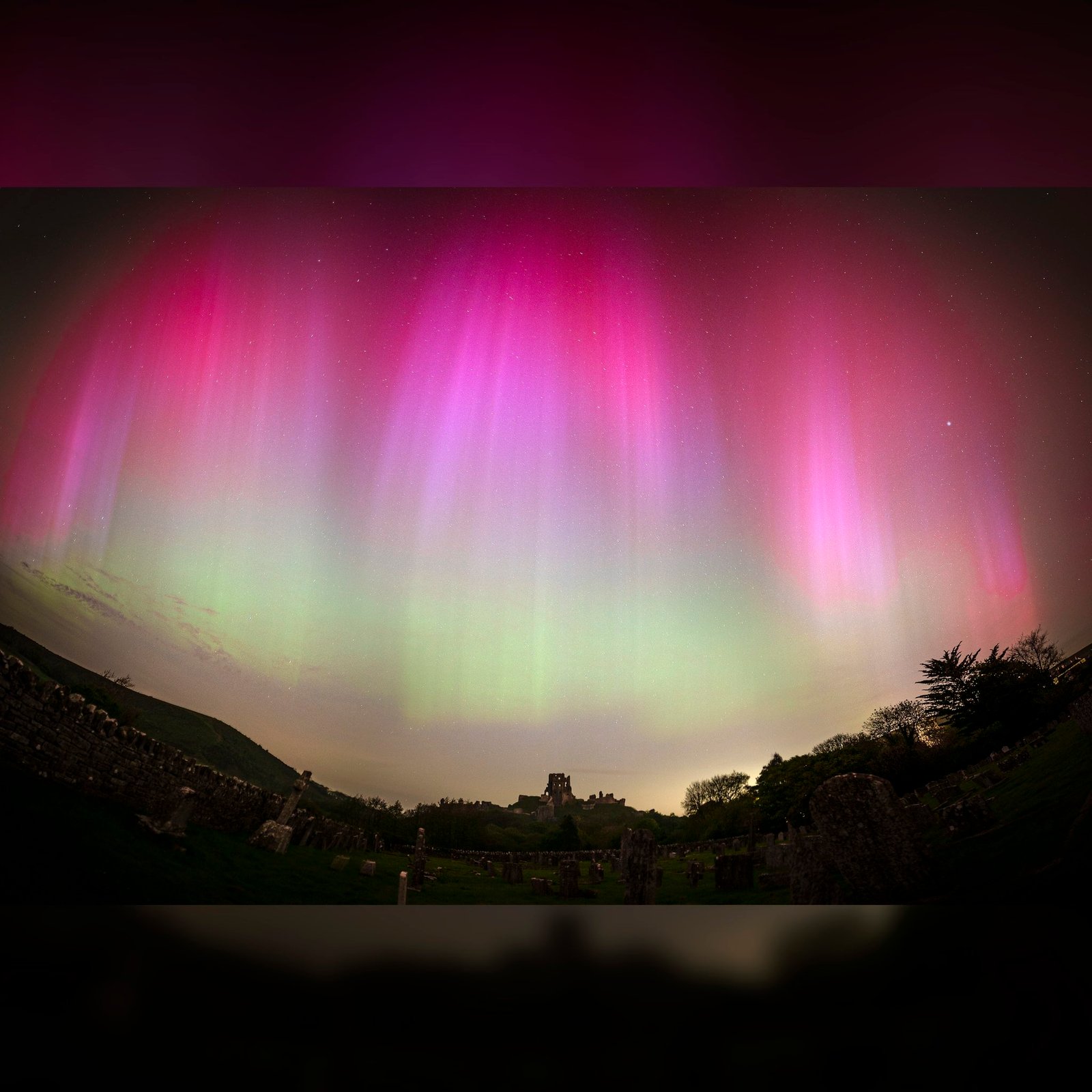Witness a rare cosmic display as Perseid Meteor Shower, northern lights, and a unique SAR arc illuminate the sky over an 11th-century castle. Discover the details behind this once-in-a-lifetime photograph.
In the early hours of August 12 and 13, 2024, an extraordinary celestial event unfolded over the historic Corfe Castle in the UK. Photographer Josh Dury captured a once-in-a-lifetime scene that includes the Perseid meteor shower, the northern lights, and a rare atmospheric phenomenon known as the Stable Auroral Red (SAR) arc, all set against the backdrop of this ancient 11th-century castle.

A Night of Unprecedented Cosmic Beauty
When Josh Dury embarked on his photography session to capture the peak of the Perseid meteor shower, he anticipated a stunning view. However, he was greeted with an even more spectacular display. His photograph not only showcases the Perseid meteors streaking across the sky but also highlights the ethereal northern lights and the elusive SAR arc. Adding to the allure of the scene are the Andromeda and Triangulum galaxies, subtly glowing in the night sky.
Dury, who had previously photographed Corfe Castle during the G5 geomagnetic storm in May, was thrilled to return for another cosmic spectacle. The strong G3 geomagnetic conditions forecasted for the Perseid shower’s peak were a promising sign, and his patience paid off magnificently.
The Magical Phenomena Explained

Perseid Meteor Shower
The Perseid meteor shower, a highlight of the summer sky, occurs annually from mid-July to late August. It results from Earth’s passage through debris left by Comet Swift-Tuttle, which last passed Earth in 1992. As these tiny fragments enter our atmosphere, they ignite in brilliant bursts, creating what we see as “shooting stars” radiating from the constellation Perseus.
Northern Lights (Aurora Borealis)
The northern lights, or aurora borealis, offer a mesmerizing display of our planet’s magnetic shield in action. When charged particles from the sun collide with Earth’s magnetic field, they are funneled towards the polar regions. This interaction causes the atmosphere to emit a colorful glow, creating the captivating aurora.
Stable Auroral Red (SAR) Arc
The SAR arc is a deep red atmospheric phenomenon discovered in 1956. Although it is not a true aurora, SAR arcs are associated with strong geomagnetic storms. They occur when energy from Earth’s ring current, a flow of charged particles encircling the planet, heats the upper atmosphere. The red glow, emitted by atomic oxygen, is usually too faint for the human eye to detect, making it a rare sight captured only through advanced imaging.
A Photographer’s Delight
Dury’s dedication and keen eye led to an astonishing capture. Not only did he photograph the northern lights, but he also stumbled upon the SAR arc during image processing—a truly serendipitous find. His detailed shot includes the Perseid Meteor Shower, the vivid auroras, and the faint SAR arc, all set against the backdrop of Corfe Castle. This image stands as a testament to the beauty and unpredictability of the night sky.
This once-in-a-lifetime photograph offers a rare glimpse into the dynamic interplay of cosmic phenomena and historical landmarks, reminding us of the breathtaking wonders the universe has to offer.

Related Topics Perseid Meteor Shower:
- Perseid Meteor Shower 2024: Peak Viewing Times and Tips
- Understanding the Northern Lights: Science Behind the Aurora Borealis
- Exploring Rare Atmospheric Phenomena: SAR Arcs and STEVE
For the latest updates on cosmic events and more stunning photography, subscribe to our newsletter and stay tuned!








